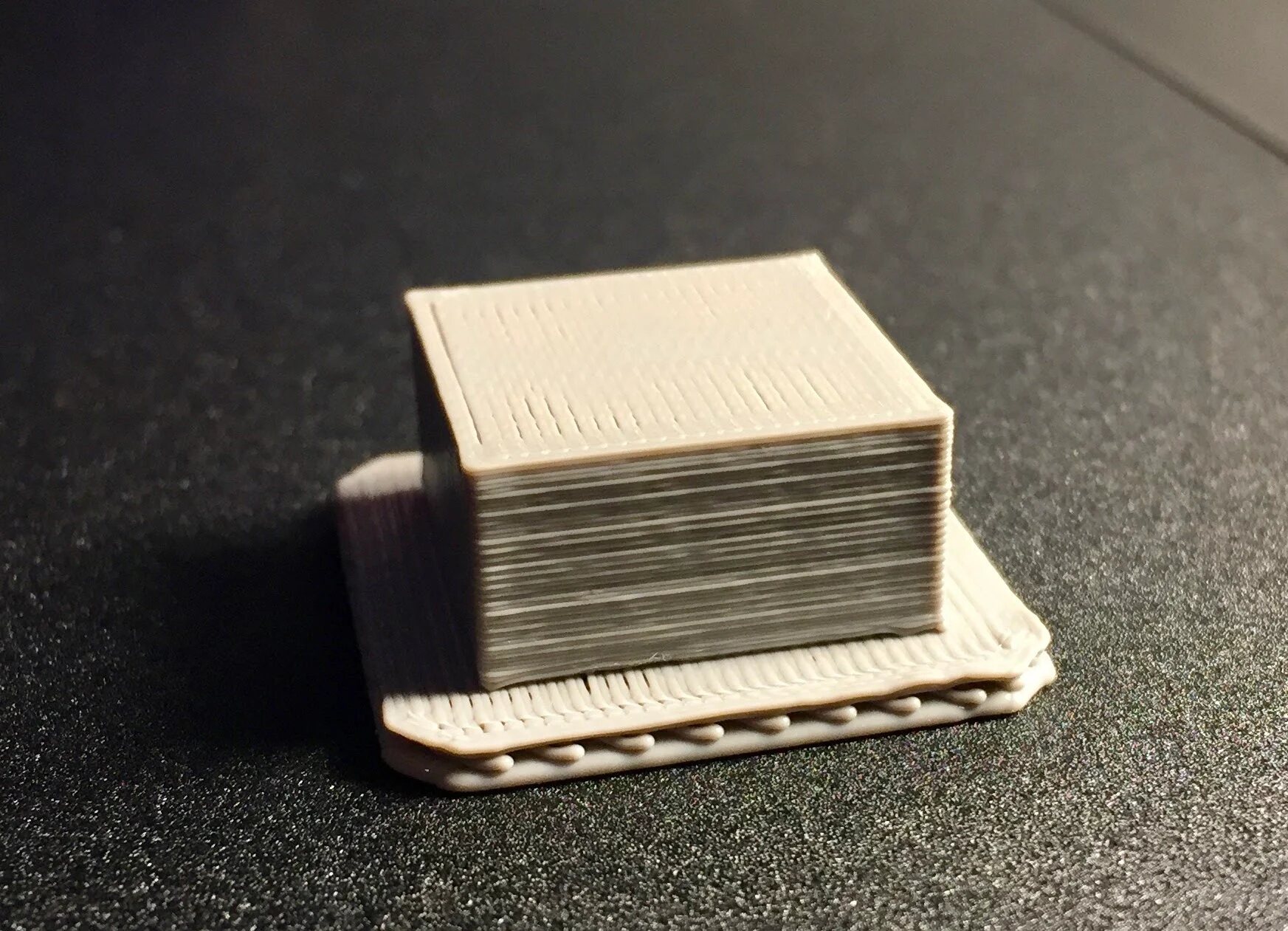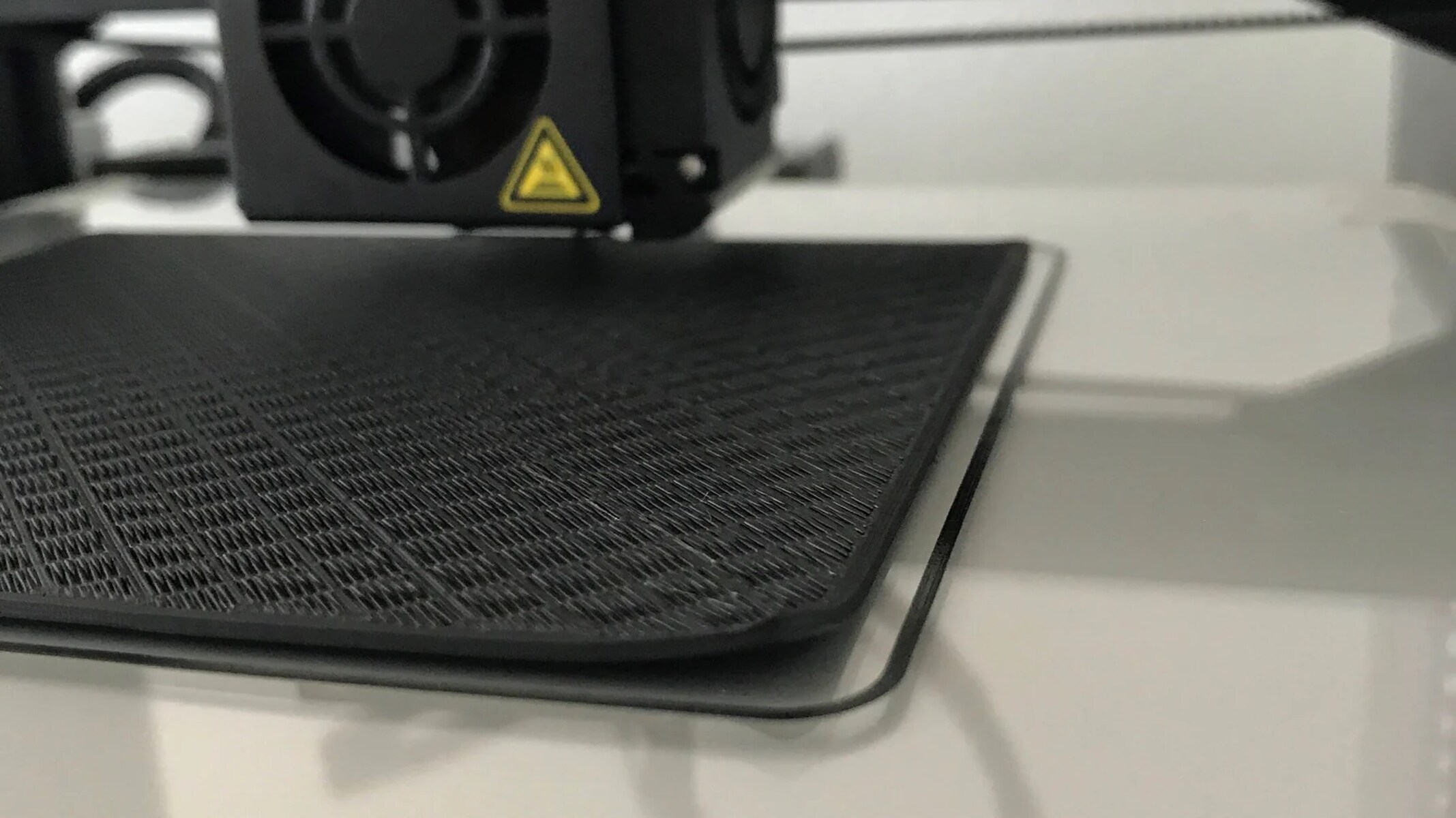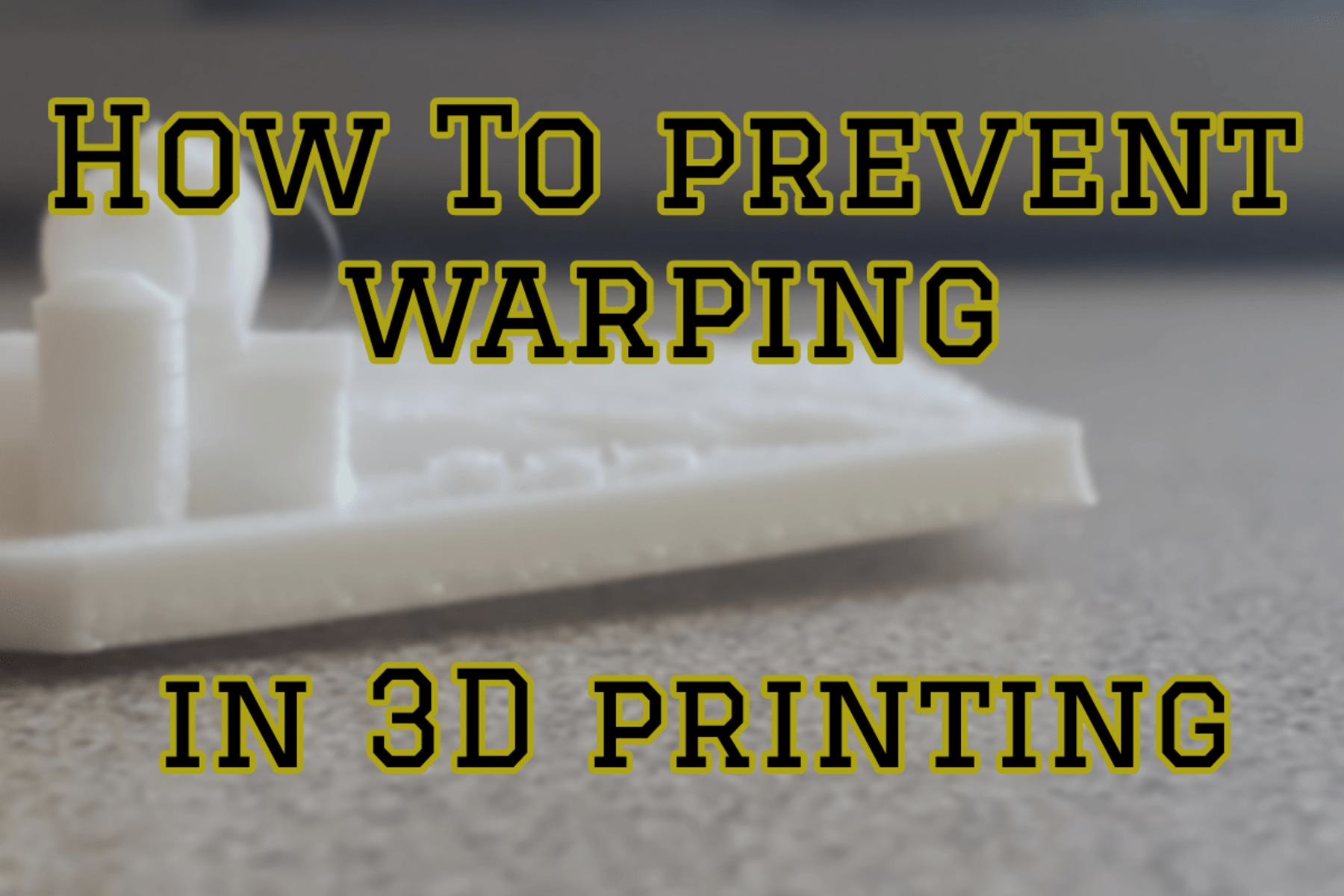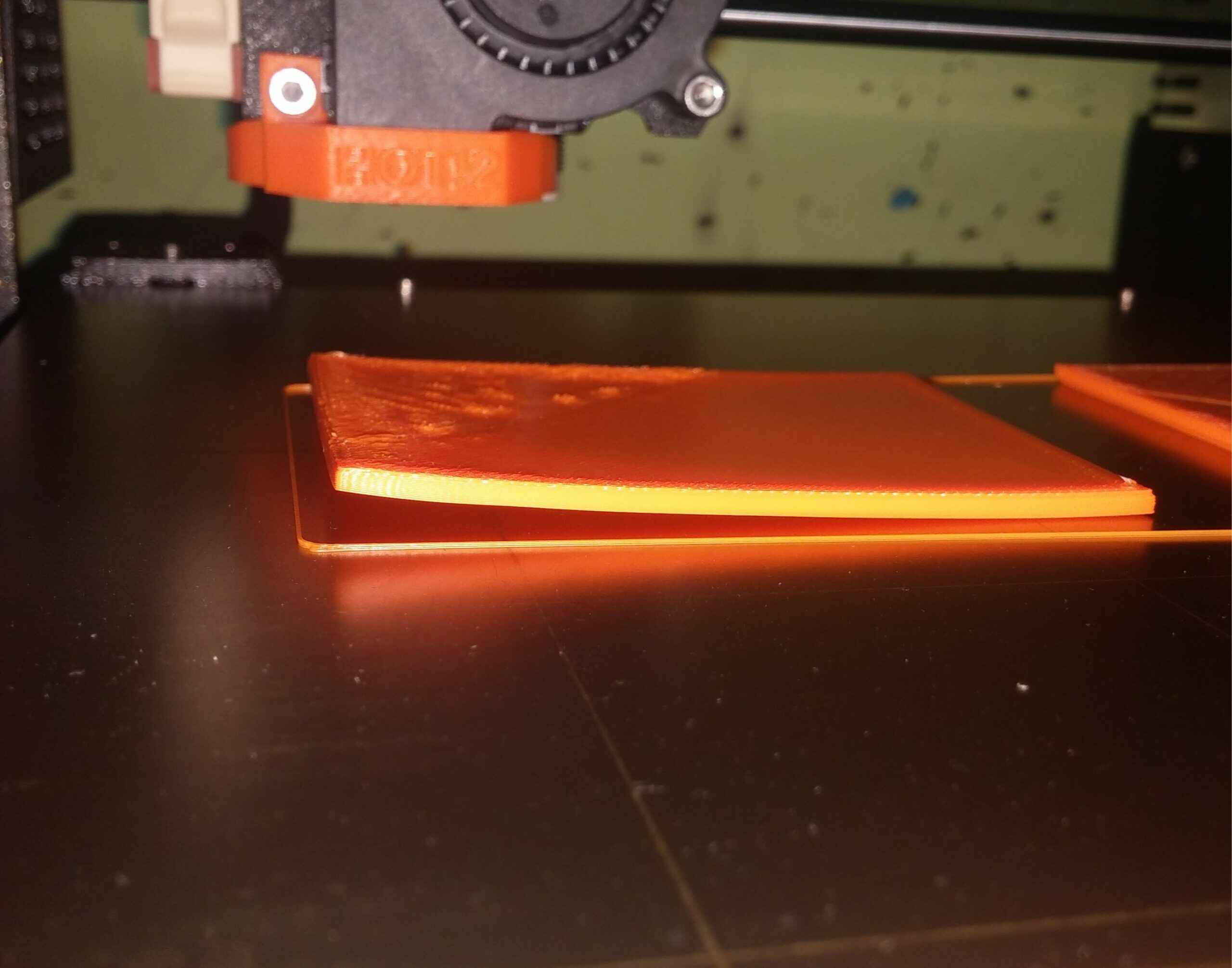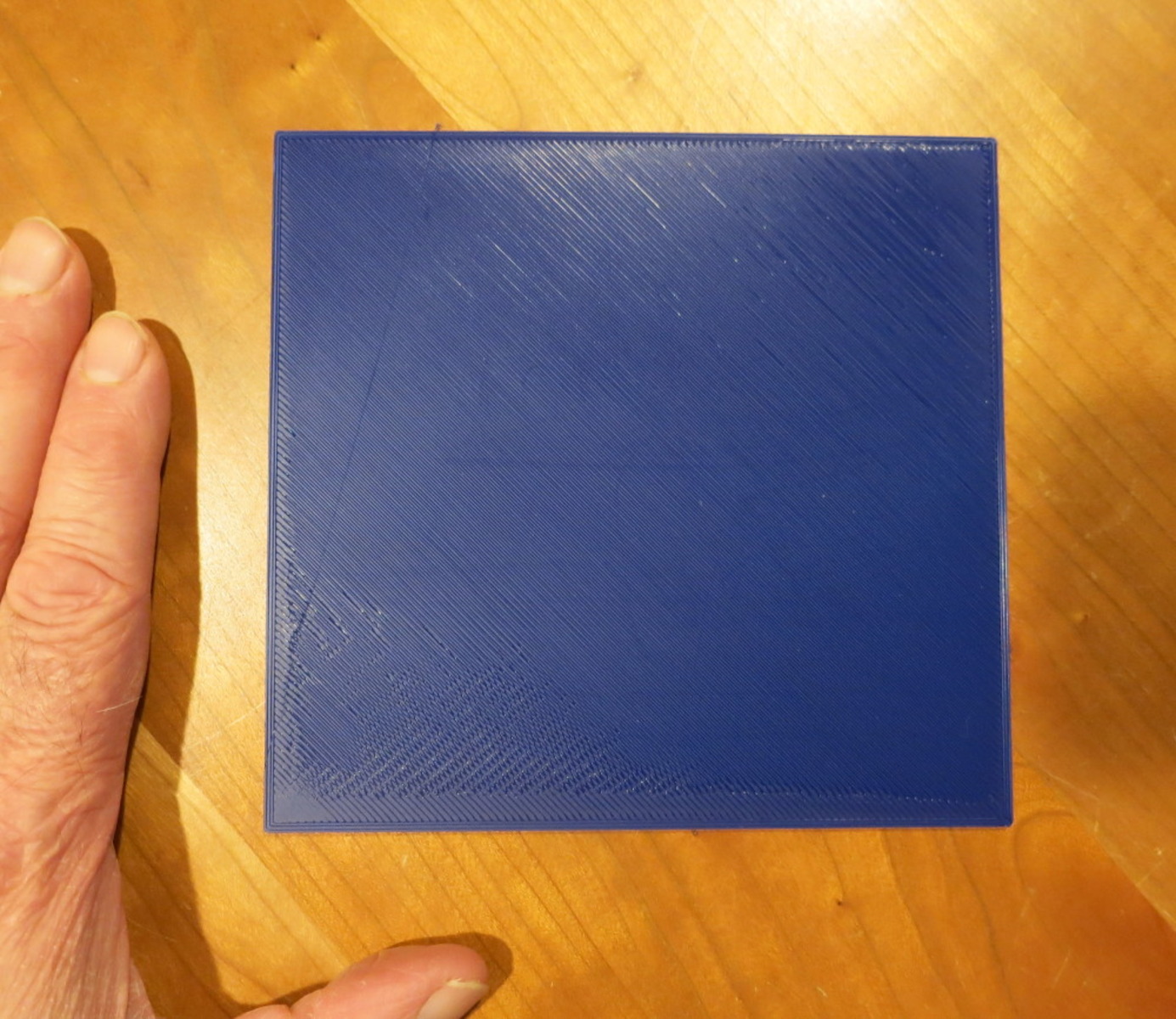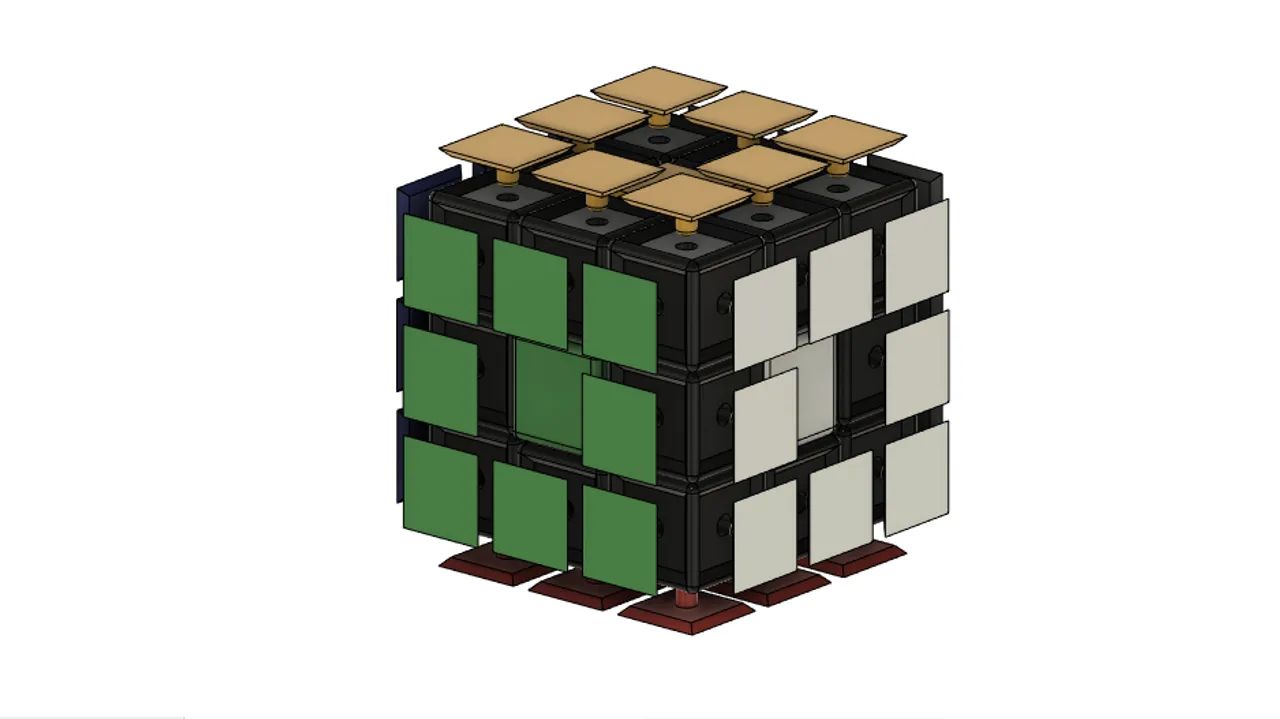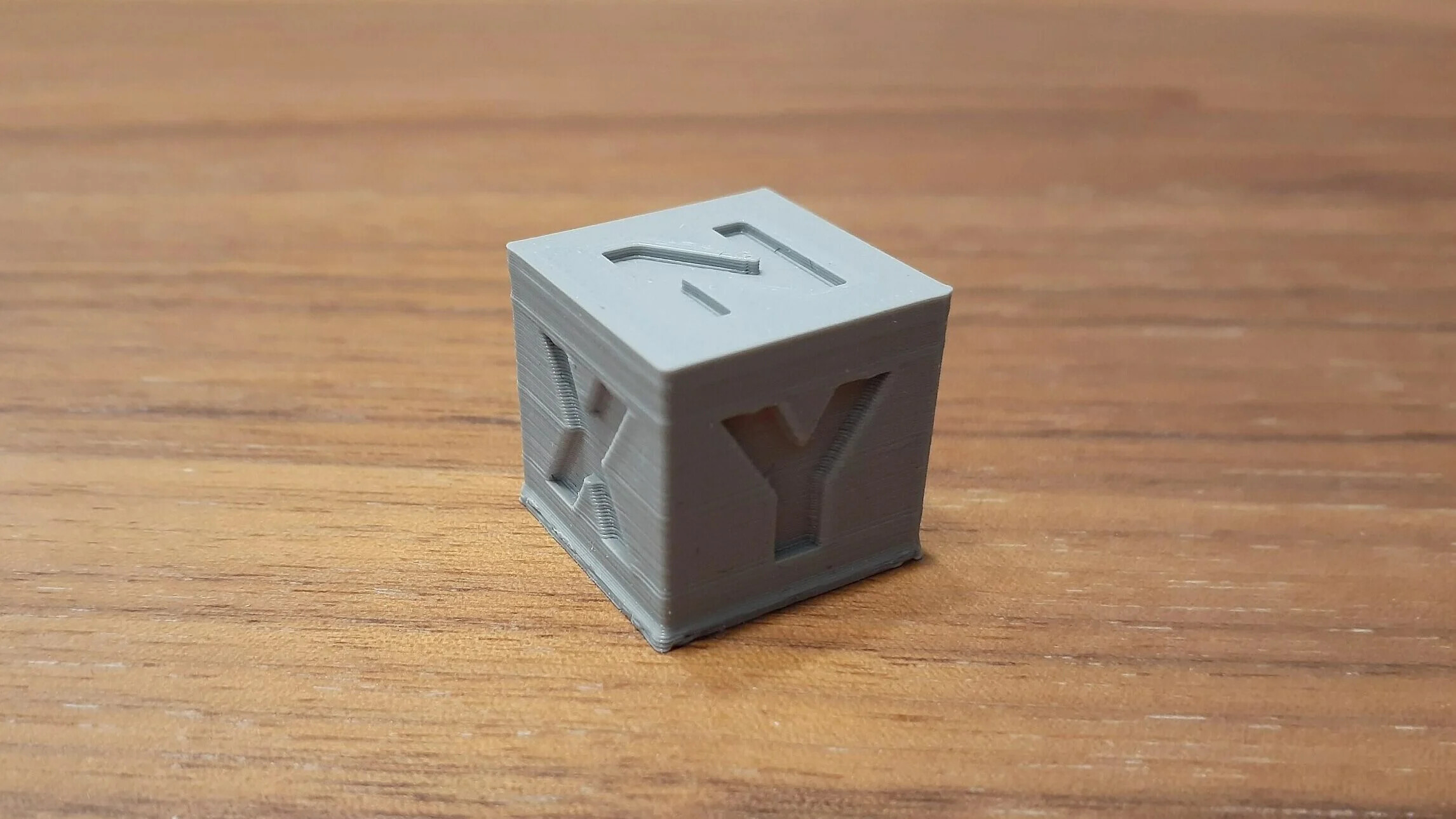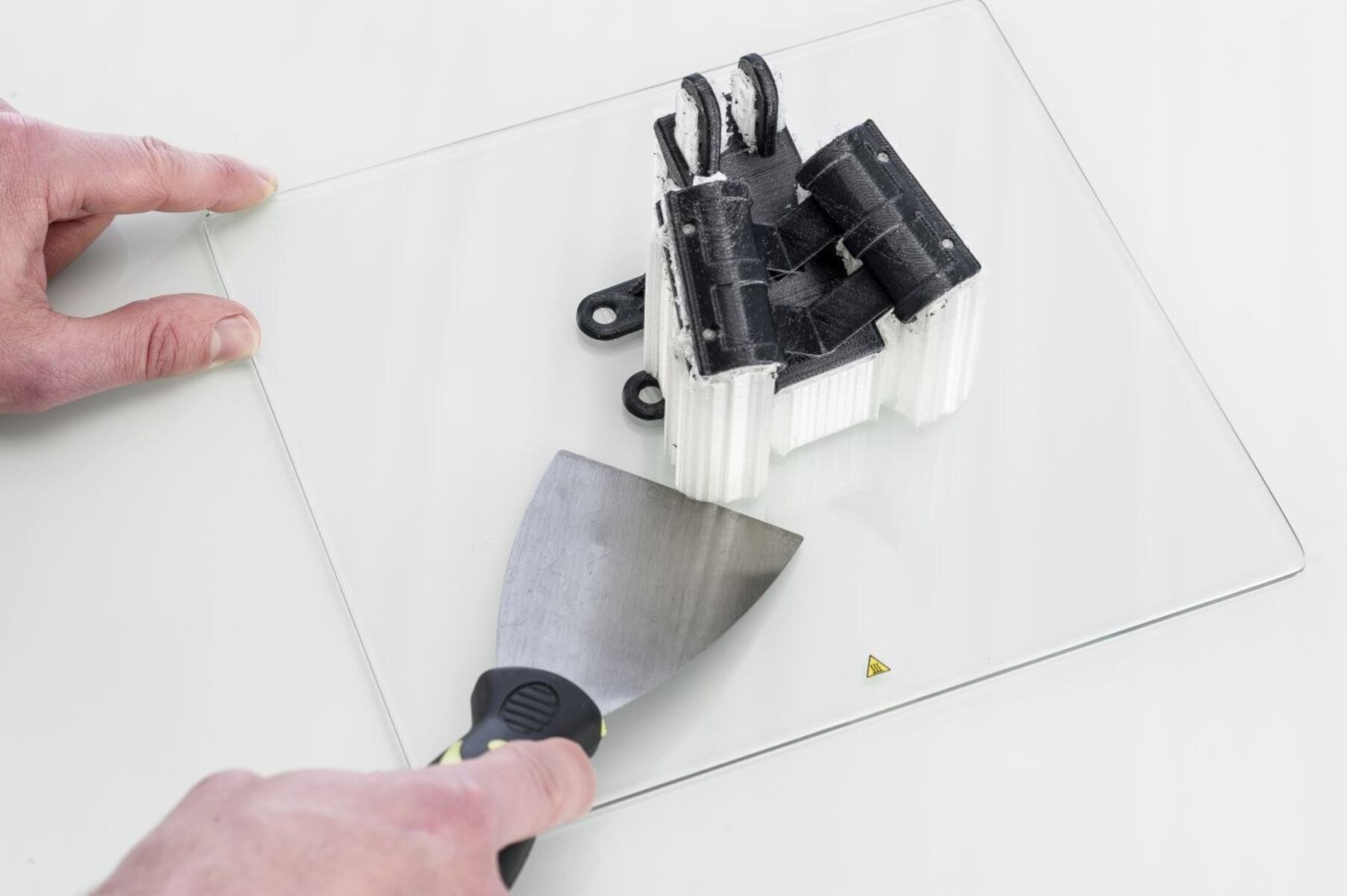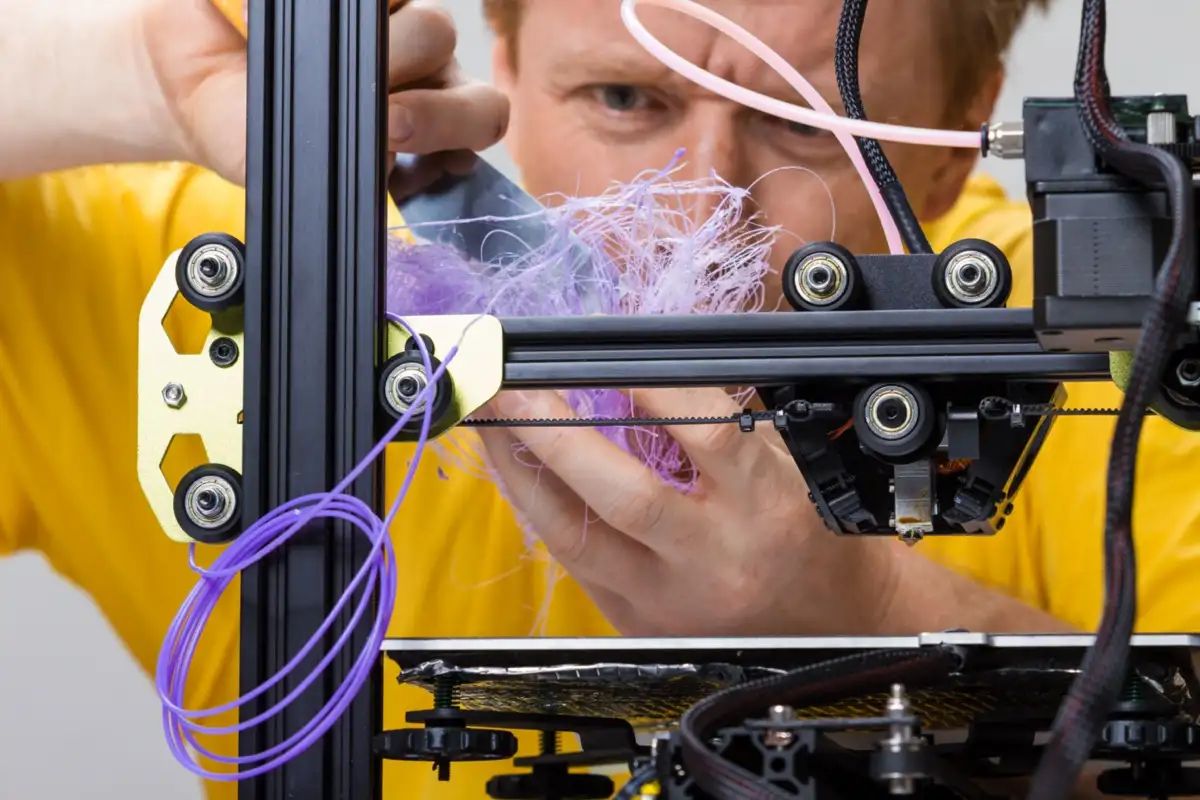Introduction
Welcome to the world of 3D printing! This revolutionary technology has transformed the way we manufacture and create objects, allowing us to turn our virtual ideas into tangible realities. With 3D printing, intricate and complex designs that were once only possible on screen can now be brought to life in three dimensions.
But what exactly is 3D printing? In simple terms, it is the process of creating physical objects from a digital model by building them layer by layer. This process, also known as additive manufacturing, has gained popularity across various industries, from engineering and architecture to healthcare and fashion.
One key aspect of 3D printing is the use of support structures, such as a raft, which play a crucial role in ensuring a successful print. A raft is a temporary base layer that is printed underneath the actual object, providing stability and adhesion to the build platform. In this article, we will dive deeper into the concept of raft 3D printing and explore its benefits and drawbacks.
What is 3D Printing?
3D printing, also known as additive manufacturing, is a process of creating physical objects from digital models. Unlike traditional manufacturing methods that involve cutting, drilling, or molding materials, 3D printing builds objects layer by layer, using various materials such as plastics, metals, or even food and biological materials.
The process begins with a digital 3D model that is created using specialized software or obtained through 3D scanning. This model is then sliced into thin cross-sectional layers, which are sent to a 3D printer. The printer, guided by the sliced model, deposits material layer by layer, gradually building up the object.
There are several types of 3D printing technologies available, including fused deposition modeling (FDM), stereolithography (SLA), selective laser sintering (SLS), and more. Each technology has its own unique process, materials, and capabilities, but they all share the common goal of transforming virtual designs into physical objects.
3D printing offers numerous advantages over traditional manufacturing processes. One of the most significant benefits is the ability to create highly complex and intricate designs that would be difficult or impossible to produce using conventional methods. This opens up a world of possibilities for designers, engineers, and artists to bring their innovative ideas to life.
In addition, 3D printing allows for the production of customized and personalized objects. With traditional manufacturing, mass production often limits the level of customization, but 3D printing enables individualized products tailored to specific needs and requirements. This has been particularly beneficial in fields such as healthcare, where 3D printing has been used to create patient-specific implants and prosthetics.
Furthermore, 3D printing can lead to cost savings and faster production times. Traditional manufacturing often requires expensive tooling and setup, but with 3D printing, objects can be manufactured directly from the digital model, reducing the need for tooling and minimizing production lead times.
Overall, 3D printing has revolutionized the way we think about manufacturing and has opened up a world of possibilities for innovation and creativity. From rapid prototyping to customized production, this technology continues to push the boundaries of what is possible in the world of manufacturing.
What is a Raft?
In the world of 3D printing, a raft is a support structure that is printed underneath the actual object being created. It serves as a temporary base layer that provides stability and adhesion to the build platform.
When using a 3D printer, it is essential to ensure proper adhesion between the object and the build platform. Without adequate adhesion, the object may detach or warp during the printing process. This is especially critical when working with materials that have a tendency to shrink or warp, such as certain types of plastics.
A raft helps address these challenges by providing a solid foundation for the object to be printed on. It creates a wider surface area for the first layer of the object, improving adhesion and stability. The raft also helps to distribute the heat evenly across the build platform, minimizing the risk of warping.
Rafts are particularly useful when printing objects with large bases or complex geometries. These types of objects may have areas that do not come into direct contact with the build platform, causing them to detach during the printing process. By using a raft, the entire object is supported, ensuring successful printing.
Moreover, rafts can also be beneficial when working with certain materials that require higher bed temperatures for better adhesion. These materials can leave residue or marks on the build platform if printed directly on it. By using a raft, any potential marks or residue will be on the raft itself, which is easily removable.
It’s important to note that not all 3D prints require a raft. Objects with small bases or simple shapes may not need the additional support that a raft provides. Additionally, some 3D printers offer alternative support structures such as brims or rafts that are specifically designed for certain types of prints.
Overall, rafts play a crucial role in successful 3D printing by providing stability, adhesion, and support to the objects being printed. They help to minimize the risk of failed prints and improve the overall quality of the final product. Understanding when and how to use rafts can greatly enhance the success rate and reliability of 3D printing projects.
How Does Raft 3D Printing Work?
When utilizing raft 3D printing, the process involves adding an additional layer of material underneath the object being printed. This layer serves as a foundation or base for the object, providing support and adhesion during the printing process.
The first step in rafts 3D printing is to set up the 3D printer with the necessary parameters. This includes selecting the appropriate print settings such as layer height, print speed, extrusion temperature, and bed temperature. Additionally, the specific software being used may have options to enable or disable raft printing.
Once the printer is set up, the 3D model is imported into the slicing software. The slicing software then generates instructions for the printer on how to build the object layer by layer, as well as the necessary support structures, including the raft. The raft is typically added as an additional layer at the bottom of the object.
During the printing process, the printer deposits the first layer of material for the raft onto the build platform. This layer is typically larger than the footprint of the object being printed, providing a solid base for adhesion. The printer then continues to build the object on top of the raft layer, following the instructions from the slicing software.
Once the printing is complete, the raft can be removed from the object. It is important to carefully detach the raft to avoid damaging the printed object. Different materials and printers may require different techniques for raft removal, such as peeling it off or using tools to separate it from the object.
Some 3D printing software allows for customization of raft settings, such as the air gap or density. Adjusting these settings can help optimize the printing process for different objects or materials, ensuring successful prints with minimal support material.
Overall, raft 3D printing works by providing a stable foundation and support for objects during the printing process. By adding a separate layer underneath the object, rafts help improve adhesion, reduce warping, and increase the success rate of prints. Understanding how to set up and use rafts effectively is key to achieving high-quality and successful 3D prints.
Benefits of Raft 3D Printing
Raft 3D printing offers several benefits that contribute to the overall success and quality of prints. Let’s explore some of the advantages of using rafts in the 3D printing process.
Improved Adhesion: One of the primary advantages of using rafts is the enhanced adhesion they provide. The raft serves as a larger surface area for the object to adhere to, especially useful when printing materials that have a tendency to warp or shrink. The improved adhesion prevents the object from detaching or warping during the printing process, resulting in more successful prints.
Support for Complex Shapes and Large Bases: Rafts are particularly beneficial when printing objects with large bases or intricate geometries. These types of shapes may have areas that do not come into direct contact with the build platform, leading to poor adhesion and print failure. By using a raft, the entire object is supported, ensuring stability and a successful print regardless of its complexity.
Minimized Warping: Certain materials, such as ABS, have a higher tendency to warp as they cool down. Rafts can help minimize warping by spreading the heat more evenly across the build platform. The raft acts as a buffer that absorbs and dissipates heat, reducing the risk of warping and resulting in more accurate and dimensionally stable prints.
Easier Removal and Cleaning: Rafts can be easily separated from the printed object after the print is completed. This makes the removal of the printed object from the raft hassle-free. Additionally, any marks or residue left behind during the printing process will be on the removable raft rather than the build platform, making the cleaning process more convenient.
Print Surface Protection: Using a raft can help protect the build platform from potential damages caused by materials that adhere strongly or leave marks. Some materials may require higher bed temperatures for better adhesion, leaving behind residue that can be difficult to remove. By using a raft, any marks or residue will be on the raft itself, preserving the build platform’s surface integrity.
Increased Print Success Rate: Overall, rafts contribute to a higher success rate in 3D printing. By improving adhesion, supporting complex shapes, minimizing warping, and providing easier removal and cleaning, rafts help ensure that prints are completed successfully. This reduces the likelihood of failed prints and the associated wasted time and material.
By harnessing the benefits of rafts in 3D printing, you can achieve better print quality, increased success rates, and greater reliability in your 3D printing projects. Understanding when and how to use rafts effectively can greatly enhance your overall printing experience.
Drawbacks of Raft 3D Printing
While raft 3D printing offers numerous benefits, there are also some drawbacks that should be considered. Understanding these limitations can help you make informed decisions when utilizing rafts in your 3D printing projects.
Increased Material Usage: The addition of a raft to the printing process requires extra material to be used for each print. This can lead to increased material costs, especially when printing multiple objects or large-scale projects. Additionally, the additional material may contribute to longer print times, as the printer needs to lay down more layers for the raft and the object.
Surface Imperfections: Rafts may leave marks or imperfections on the surface of the printed object. Since the raft is in direct contact with the object during the printing process, there is a possibility of transfer or markings that require additional post-processing steps to smooth out or remove. This can be particularly noticeable on objects with smooth or finished surfaces.
Support Structure Removal: Removing the raft from the printed object can sometimes be a challenging task. Depending on the material and the design of the object, the raft may be firmly attached, requiring careful and meticulous removal techniques. Improper removal can result in damage to the object or require additional post-processing to repair any imperfections caused during the removal process.
Potential Interference: In some cases, the raft may interfere with certain parts or features of the object being printed. This is especially true when printing complex or intricate designs that require precision and fine details. The raft can hinder the final outcome and may require additional post-processing or modifications to achieve the desired result.
Incompatibility with Some Materials: While rafts are commonly used with various materials, there are certain materials that may not require or work well with rafts. For instance, some flexible or highly adhesive materials may have strong adhesion properties without the need for a raft. It’s important to consider the specific material properties and print requirements when deciding whether or not to use a raft.
Considering the drawbacks of raft 3D printing helps ensure that you make informed decisions when utilizing this support structure. While rafts can greatly improve adhesion and print success, it’s important to weigh the potential increase in material usage, surface imperfections, support structure removal challenges, possible interference, and material compatibility before deciding to incorporate rafts into your 3D printing process.
Tips for Using Raft 3D Printing
Utilizing rafts in 3D printing can greatly enhance print success and overall quality. To make the most of this support structure, here are some helpful tips to keep in mind when using raft 3D printing:
Optimize Raft Settings: Experiment with the settings related to the raft, such as raft air gap and density, to achieve the best results. Adjusting these parameters can help optimize the printing process for different objects, materials, and printer models. Fine-tuning the raft settings can improve adhesion and reduce the chances of surface imperfections.
Consider Material Compatibility: Not all materials require a raft, and some may not work well with rafts. Consider the specific material properties and consult manufacturer guidelines or online resources to determine if a particular material benefits from raft usage. For example, certain materials with strong adhesion may not require rafts, while others may benefit from the added stability and support.
Ensure Proper Bed Leveling: Maintaining a leveled build platform is crucial for successful raft 3D printing. Make sure to regularly check and calibrate your printer’s bed to ensure consistent and accurate printing. A properly leveled bed helps prevent issues such as uneven raft deposition or poor adhesion to the build platform.
Minimize Raft Size and Layer Thickness: When possible, try to minimize the size and thickness of the raft to reduce material usage and printing time. Adjusting these parameters can help strike a balance between providing adequate support and minimizing the impact on the overall print. However, be cautious not to compromise the stability and adhesion of the object.
Use Suitable Removal Technique: When removing the raft from the printed object, use appropriate techniques to avoid damaging the object’s surface. Start by gently peeling or prying the edges of the raft and gradually work your way around. Use tools such as tweezers, putty knives, or needle-nose pliers if necessary, but exercise caution to prevent any unintended damage to the object.
Post-Processing as Needed: After removing the raft, examine the printed object for any surface imperfections or markings. Depending on the material and the specific requirements of the print, additional post-processing steps such as sanding, polishing, or painting may be necessary to achieve the desired finish and smoothness.
Keep a Print Log: It can be helpful to keep a record of your experiences with raft 3D printing. Note down the specific settings, materials, and techniques used for each print. This log can serve as a reference for future prints and help you fine-tune your process over time.
By following these tips, you can optimize your use of raft 3D printing and enhance the success rate, print quality, and overall efficiency of your 3D printing projects.
Conclusion
Raft 3D printing is a valuable technique that offers support, stability, and improved adhesion to help achieve successful 3D prints. By understanding what rafts are and how they work, you can harness their benefits to overcome potential challenges in the printing process.
Through the use of rafts, complex shapes and large-based objects can be printed with greater accuracy and stability. Rafts also minimize the risk of warping and detachment, especially when working with materials prone to such issues. Furthermore, rafts aid in protecting the build platform and make the removal and cleaning process more convenient.
However, it is important to consider the drawbacks associated with raft 3D printing, such as increased material usage, potential surface imperfections, support structure removal challenges, possible interference, and material compatibility limitations.
To maximize the effectiveness of raft 3D printing, optimize the raft settings, consider material compatibility, ensure proper bed leveling, and use suitable removal techniques. Additionally, post-process the printed objects as needed to achieve the desired finish and details.
By incorporating these tips into your 3D printing workflow, you can leverage the benefits of raft 3D printing to produce high-quality prints and increase the success rate of your projects.
Now that you have a better understanding of raft 3D printing, you can confidently explore its application in your own projects, knowing how to leverage its benefits while navigating its limitations. As 3D printing continues to evolve, the use of rafts will remain a valuable tool to ensure successful and reliable prints.







